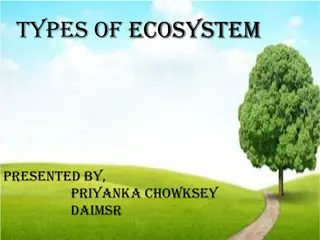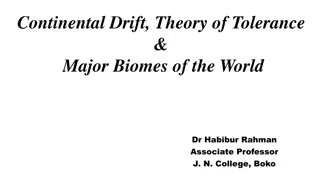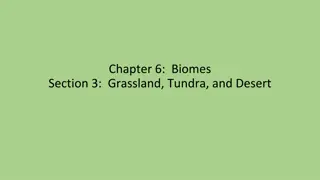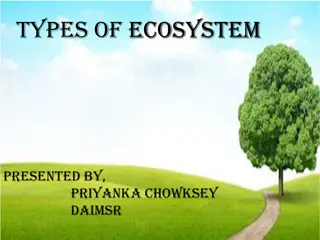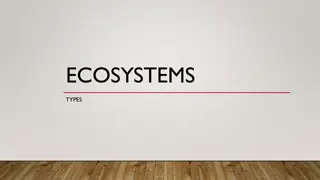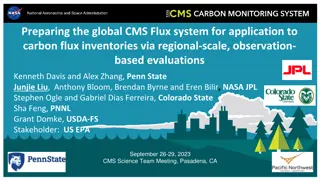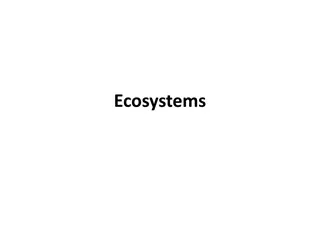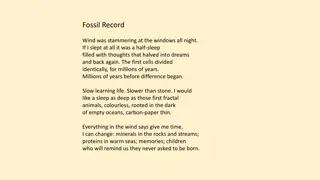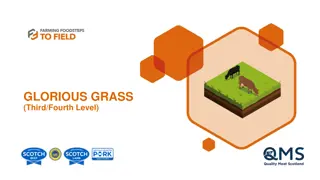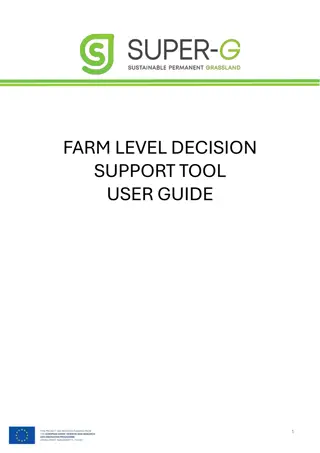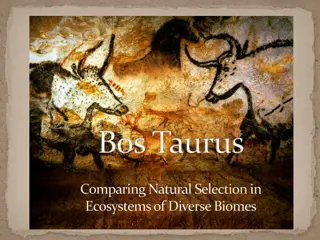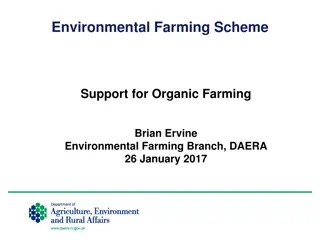Ecosystems: Types, Components, and Interactions
Different types of ecosystems, their components, and how they interact with each other. Explore natural ecosystems, such as deserts and rainforests, as well as artificial ecosystems. Discover the importance of terrestrial, aquatic, forest, marine, freshwater, tundra, and grassland ecosystems.
4 views • 6 slides
Different Ecosystem Types and Functions
Learn about the major types of ecosystems such as Grassland, Aquatic, Forest, and Desert presented by Priyanka Chowksey of DAIMSR. Understand the components of an ecosystem, including biotic and abiotic factors, and the significance of different ecosystems like Forest Ecosystem and Desert Ecosystem.
5 views • 29 slides
Continental Drift, Theory of Tolerance & Major Biomes of the World Overview
This detailed presentation explores topics like Continental Drift, the Theory of Tolerance, and Major Biomes of the World. It covers the history of the Continental Drift theory, from Wegener to Du Toit's modifications, and delves into the various terrestrial biomes that exist, including tundra, bore
2 views • 26 slides
Grassland, Tundra, and Desert Biomes: Exploring Earth's Diverse Landscapes
Grassland, tundra, and desert biomes are unique ecosystems shaped by varying levels of rainfall. From the grassy plains of savannas to the harsh conditions of tundras, each biome hosts a diverse array of plants and animals adapted to survive in challenging environments. Discover the distinct charact
0 views • 28 slides
Major Types of Ecosystems
Explore the diverse world of ecosystems, including grassland, aquatic, forest, and desert ecosystems. Learn about the biotic and abiotic factors that shape these environments and the critical roles they play in supporting life. Delve into forest ecosystems with their canopy, floor, and soil features
1 views • 29 slides
Different Types of Ecosystems and Their Characteristics
Ecosystems are diverse environments encompassing both living organisms and non-living factors. From forest and grassland ecosystems to deserts and tundras, each type has unique features and interactions. Forests house a variety of organisms, while grasslands are dominated by grass and herbs. Deserts
0 views • 10 slides
Application of CMS-Flux System for Carbon Flux Inventories Evaluation
Preparation for the global CMS Flux system integration with US forest and agricultural carbon inventory data to quantify uncertainties and enhance inventory-relevant flux estimates. The project aims to evaluate the utility of CMS-Flux-NA system for top-down assessment of US agricultural and forest C
2 views • 21 slides
Diverse Ecosystems through Visuals
Dive into the world of ecosystems with stunning images showcasing biogeographical realms, regions, ecological succession, lichens, mosses, forest types like coniferous, evergreen, deciduous, and thorn forests, as well as mangroves. Discover grassland ecosystems, fauna, desert ecosystems, and various
0 views • 20 slides
Whispers of Deep Time: Reflections on Evolution and Nature
Wind whispers through the fossil record, carrying echoes of ancient lifeforms and primordial oceans. Soft, unbreakable creatures traverse the depths while desert floors tell stories of rolling processes and rain's wanderings. Between horizons of desert and grassland lie tales of early life and shore
0 views • 12 slides
The Vital Role of Grass in Scotland
Grass plays a crucial role in Scotland's agriculture and ecosystem, providing sustenance for livestock, stabilizing soil, reducing carbon footprint, and enhancing biodiversity. With over 80% of Scotland covered in grassland, its importance cannot be overstated. This presentation delves into the vari
0 views • 24 slides
Sustainable Grassland Management Tool for Farmers
Explore the Farm Level Decision Support Tool User Guide developed by the SUPER-G project for optimizing the management of permanent grasslands in Europe. This tool assists farmers in understanding the impact of their practices on ecosystem services and biodiversity, providing tailored recommendation
0 views • 11 slides
Comparing Natural Selection in Diverse Biomes: Spanish Cattle Adaptations
Explore the natural selection of Spanish cattle in desert, swamp, and grassland ecosystems. Compare characteristics of Cracker and Chinampo cattle, highlighting their adaptations for survival in different biomes. Discover how these species thrive in challenging environments through unique physical a
0 views • 11 slides
Organic Farming Support Program Overview
This overview highlights the Environmental Farming Scheme's support for organic farming, including conversion and management options, eligibility criteria, payment rates, and digressive payments. The scheme aims to increase biodiversity, improve soil quality, enhance water quality, and promote clima
0 views • 13 slides

